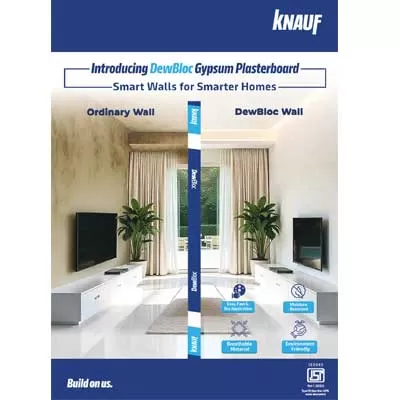Prabhakar Singh, Director-General,
Central Public Works Department (CPWD)
A pan-India presence with the ability to undertake construction of complex projects in tough terrain and maintenance in the post-construction stage…that’s the Central Public Works Department (CPWD). Established in July 1854 when Lord Dalhousie established a central agency for execution of public works and set up the Ajmer Provincial Division, this 165-year-old organisation has grown into a comprehensive construction management department today, providing services from project concept to completion, consultancy and maintenance management. Having worked for over 36 years in different capacities in the CPWD, Prabhakar Singh, Director-General, shares more on the body’s many initiatives towards sustainability and focus on innovation and novelty in conversation with SHRIYAL SETHUMADHAVAN.
Please tell us about CPWD’s key achievements and contribution over the years towards building India.
Over the years, CPWD has been involved in the development of Rashtrapati Bhavan, Nirman Bhavan and Udyog Bhavan in Delhi. Our services are not only limited to construction—we are also the principle technical advisor to the Government of India. Standard practices, specifications and project management manuals have been followed by all construction agencies and mainstream agencies of the Government, public-sector units, autonomous bodies and even the private sector. Making policies for the Government is a big role we have to fulfil. Also, CPWD’s current order book, including works in the pipeline, is worth Rs 1,300 billion and a lot more orders are coming to us.
Having worked for over 36 years in different capacities in the CPWD, what have been the turning points or highlights of your career?
Every capacity I have worked in has presented a different kind of challenge. But I believe that every small bit of change adds to the strength of the entire chain. Working within the rules and regulations of the Government and the transferability, accountability and challenge of availability of funds, size, decisions, materials, contracts, dispute, court cases and keeping a fine balance between all of this has been challenging. The achievement is that I have been able to deliver quality projects much before time and well within costs. I have always opted for novel things, new challenges, technology and innovation. New projects will have new technology, methods and innovation. After I took over CPWD, we started focusing on R&D, collaborating with IITs and CIDC to bring innovation into the field of construction. I have brought down the time and cost of construction compared to any other agency by less than 30-40 per cent. Without stopping traffic in the Mahipalpur area in Delhi, we worked 24 hours on the underpass and flyovers and work of 26 months was completed in 13 months with a cost savings of Rs 260 million. I consider every project a laboratory wherein I experiment and apply materials such as AAC blocks, construction and demolition (C&D) waste blocks, thereby reducing the cost. We have constructed the Paryavaran Bhavan in Delhi, which is a net-zero office building. It is probably the first of its kind in the world.
Along with BEE, CPWD has inked a pact to make 150 buildings energy-efficient, which would save 260 million units, resulting in savings of Rs 100 crore per annum. Tell us more about your green initiatives.
BEE will monitor and label our buildings. We are looking at a short-term approach and these 150 buildings will be existing buildings. For instance, BEE has inspected and measured the energy consumption at Sardar Patel Bhavan in Delhi and you would be surprised that the building has been labelled 5 star. So, we have already adopted energy and water conservation measures of a high level. And labelling that only re-emphasises our performance. In fact, I have decided that all our buildings will be 5-star rated; we will not aim for any ratings below that. We are not going to compromise on the quality and functionality of the building and comfort level of the user—the building has to be smart, green, intelligent and fully functional.
Also, IIT-Gandhinagar and the CPWD have signed a MoU to collaborate on cutting-edge R&D in the housing and urban development sector. How will it contribute to safer, efficient, long-term solutions to the existing problems of the construction industry?
While we are experts in our field, we need fresh air from the academic side as well. This MoU will look into how to apply these technologies successfully, economically and usefully. While the technology and equipment is all there, how can these be used efficiently at our site? That’s what the research will entail. I am more keen on applied research in any field because we are talking about timely deliveries. And it is with this intention that we signed the MoU with IIT-Gandhinagar. Additionally, we are collaborating and signing MoUs with other IITs as well. And what the IITs get to learn from us is project and construction management. We sent our additional director-general to IIT-Gandhinagar for a week—he has returned and we have already opened our R&D unit in our national academy at Ghaziabad to train our officers. We are also opening another R&D unit in collaboration with IIT-Gandhinagar at the IIT campus itself.
How are works progressing in the Northeast?
We are constructing a television and film institute in Itanagar, Arunachal Pradesh. So we also have a prominent presence in tough terrain and several projects have been awarded to us because we go to such difficult areas.
Considering the amount of work with CPWD, how would you comment on the current opportunity for the construction sector?
Owing to our sheer hard work, we have come to achieve an order book, including works in the pipeline, worth Rs 1,300 billion today. This speaks for our performance and how competent we are in this field. However, the future is green buildings and energy savings; hence, the requirement is for novel materials and technologies that are time-saving and enable faster construction. Eventually, people talking about three to four years for a building to come up will be a thing of the past. The future is fast construction, factory-made and finished products rather than traditional on-site construction methods.
With the Prime Minister’s agenda of ‘Minimum Government, Maximum Governance’, the Modi Government has been working to slowly dismantle several government institutions. Does this include CPWD?
CPWD is not being dismantled. Any organisation that has lived for 165 years needs to constantly change with time and adapt to changing requirements. And if an organisation fails to do it, it will be a thing of the past. So CPWD is being revamped and totally transformed. For instance, we have de-layered the seven layers of decision-making and reduced it to only four levels. The entire organisation has been restructured as per the requirement. We have created a work centre and all our decisions are absolutely work and performance-oriented. Our 500-page manual has been rewritten to 50 pages with the approach being performance-oriented. So, CPWD is a transformed organisation and our performance has multiplied.
CPWD’s Material Testing Lab was shut in January this year; this was where the materials being used in construction and maintenance works in Delhi-NCR were tested.
That material test lab was about 165 years old and not at all relevant to today’s requirements. Hence, it had to be dismantled. But there are other government testing labs as well. For instance, Delhi has the National Test House and National Physical Laboratory. These labs are equipped with modern facilities and are already available with us. Plus, there are government testing labs everywhere. So there is an alternative and at nominal charges for the industry.
Which is your dream project for CPWD?
Most recently, the Secretary, Ministry of Tribal Affairs has asked us to plan for the construction of 452 schools across the country at about Rs 30 billion. This is a big project for us. We also constructed the Ambedkar Museum in Delhi supported with IT-based, intelligent robotics. It is an iconic building and we consider it one of our best in the past six months.
Is it true that several projects initially handed over to leading PSUs are now being diverted to CPWD? Also, while leading PSUs charge around 8-10 per cent as a fee for project execution, does the same apply for CPWD?
Yes, several projects are being diverted to CPWD and the main reason is delivery. Several projects all over India are half-done, and these are now being diverted to us by the Government. Most than the cost, the focus is on successful completion. And if we draw a cost-wise comparison, CPWD charges much lesser than any other agency by 30-40 per cent.
Despite CPWD being such an established department, are there any challenges still faced in project execution?
It is challenging because you have to work in far-flung areas and communication and availability of labour and funds are a problem. As a social cause, we have been skilling labour. I have made a provision wherein we will skill 20 per cent of unskilled persons employed at our construction sites. This will lead to more skilled and employable labour and they can even contribute elsewhere towards the development of the country. We offer certified skilling that qualifies them for jobs outside the country as well. For us, the two major challenges are funds and the constant change in decisions made by clients as and when project work progresses. The project often gets held up owing to these changing decisions.
Any message for the construction industry?
This is a challenging field; to survive, you need to be innovative and proactive. To be successful, you need to be flexible to adapt to the changing environment, meeting society’s requirements and advancing technology.

















